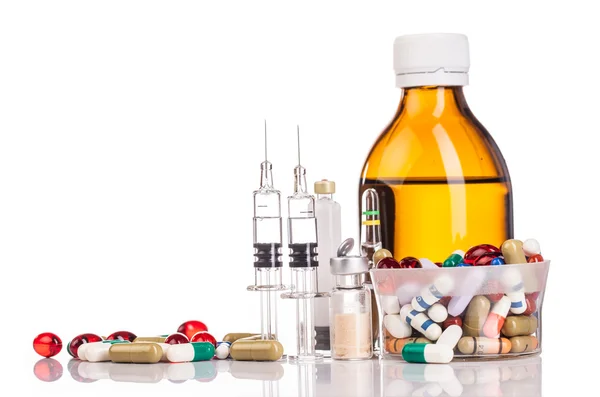The Vital Role of Life-Saving Drugs in Healthcare
Life-saving drugs are critical components of modern healthcare, offering hope and recovery to millions of patients worldwide. These medications can significantly alter the course of serious diseases, improve quality of life, and, in many cases, save lives. This article explores the importance of life-saving drugs, the process of their development, their impact on global health, and some of the most essential life-saving medications in use today.
Table of Contents
Understanding Life-Saving Drugs
Life-saving drugs are medications that can prevent death in individuals suffering from serious or life-threatening conditions. These drugs can treat a wide range of diseases, from infectious diseases like HIV/AIDS and tuberculosis to chronic illnesses like cancer and diabetes. They can also be used in emergency situations, such as heart attacks or strokes, where immediate medical intervention is crucial.
Types of Life-Saving Drugs
- Antibiotics and Antivirals: These drugs are used to treat infections caused by bacteria and viruses. Antibiotics, such as penicillin and amoxicillin, have revolutionized the treatment of bacterial infections, while antivirals, such as oseltamivir (Tamiflu) and remdesivir, are essential for managing viral infections.
- Cancer Therapies: Cancer treatment often involves a combination of surgery, radiation, and drugs. Chemotherapy, targeted therapy, and immunotherapy are some of the key drug-based treatments that have significantly improved cancer survival rates.
- Cardiovascular Drugs: These include medications for treating heart diseases, such as statins for lowering cholesterol, beta-blockers for managing hypertension, and thrombolytics for dissolving blood clots.
- Antidiabetic Drugs: Insulin and oral hypoglycemic agents are crucial for managing diabetes, a chronic disease that affects millions worldwide. A generic abiraterone manufacturer produces a cost-effective version of the drug used to treat prostate cancer, making it more accessible to patients who need it.
- Antiretrovirals: These drugs are vital for managing HIV/AIDS, transforming it from a fatal disease into a manageable chronic condition.
The Development Process of Life-Saving Drugs
Developing life-saving drugs is a complex and costly process that involves several stages:
- Discovery and Preclinical Testing: Scientists identify potential drug targets and test compounds in the laboratory and on animals to assess their safety and efficacy.
- Clinical Trials: Drugs that show promise in preclinical testing move on to clinical trials, which are conducted in three phases:
- Phase I: Tests the drug on a small group of healthy volunteers to evaluate its safety and determine a safe dosage range.
- Phase II: Involves a larger group of patients to assess the drug’s efficacy and side effects.
- Phase III: Expands the testing to thousands of patients to confirm the drug’s effectiveness and monitor adverse reactions.
- Regulatory Approval: If a drug successfully passes all phases of clinical trials, it is submitted to regulatory authorities, such as the U.S. Food and Drug Administration (FDA) or the European Medicines Agency (EMA), for approval.
- Post-Market Surveillance: After approval, the drug is monitored for any long-term adverse effects or rare side effects that may not have been detected during clinical trials.
Impact on Global Health
Life-saving drugs have had a profound impact on global health, significantly reducing mortality rates and improving quality of life. They have played a crucial role in controlling infectious diseases, managing chronic illnesses, and extending the life expectancy of patients with life-threatening conditions.
Eradicating and Controlling Diseases
- Smallpox Eradication: The development of the smallpox vaccine led to the eradication of the disease in 1980, marking a significant achievement in global health.
- HIV/AIDS Management: Antiretroviral therapy (ART) has transformed HIV/AIDS from a fatal disease into a manageable chronic condition, allowing millions of people to live healthy, productive lives.
- Malaria Control: Antimalarial drugs, such as artemisinin-based combination therapies (ACTs), have been instrumental in reducing malaria-related deaths worldwide.
Improving Chronic Disease Management
Life-saving drugs have revolutionized the management of chronic diseases, enabling patients to lead healthier lives. For example, antihypertensive medications help control high blood pressure, reducing the risk of heart attacks and strokes. Similarly, insulin and oral antidiabetic agents are essential for managing diabetes and preventing complications.
Enhancing Cancer Survival Rates
Advancements in cancer therapy have significantly improved survival rates for many types of cancer. Targeted therapies and immunotherapies have provided new treatment options for patients with previously untreatable cancers, offering hope for a cure or long-term remission.
Challenges in Accessing Life-Saving Drugs
Despite their critical importance, access to life-saving drugs remains a significant challenge, particularly in low- and middle-income countries. Several factors contribute to this issue:
- High Costs: The high cost of drug development and commercialization often translates into expensive medications, making them unaffordable for many patients and healthcare systems.
- Regulatory Barriers: Lengthy and complex regulatory processes can delay the approval and availability of new drugs.
- Intellectual Property Rights: Patents and intellectual property rights can limit the production of generic versions of life-saving drugs, restricting access to affordable alternatives.
- Supply Chain Issues: Poor infrastructure and distribution networks can hinder the delivery of essential medications to remote or underserved areas.
Efforts to Improve Access
Several initiatives are underway to improve access to life-saving drugs worldwide:
- Generic Drug Production: Encouraging the production of generic drugs can significantly reduce costs and improve access to essential medications.
- Global Health Initiatives: Organizations like the World Health Organization (WHO), the Global Fund, and Gavi, the Vaccine Alliance, work to provide affordable medications and vaccines to low-income countries.
- Partnerships and Collaborations: Public-private partnerships can facilitate research and development of new drugs, while collaborations between governments, NGOs, and pharmaceutical companies can improve drug distribution and access.
- Policy Reforms: Governments can implement policies to streamline regulatory processes, reduce drug costs, and promote the availability of generic medications.
Conclusion
Life-saving drugs are indispensable to modern healthcare, offering hope and recovery to millions of patients worldwide. While significant progress has been made in developing and distributing these essential medications, challenges remain in ensuring universal access.



